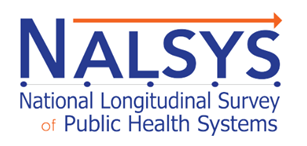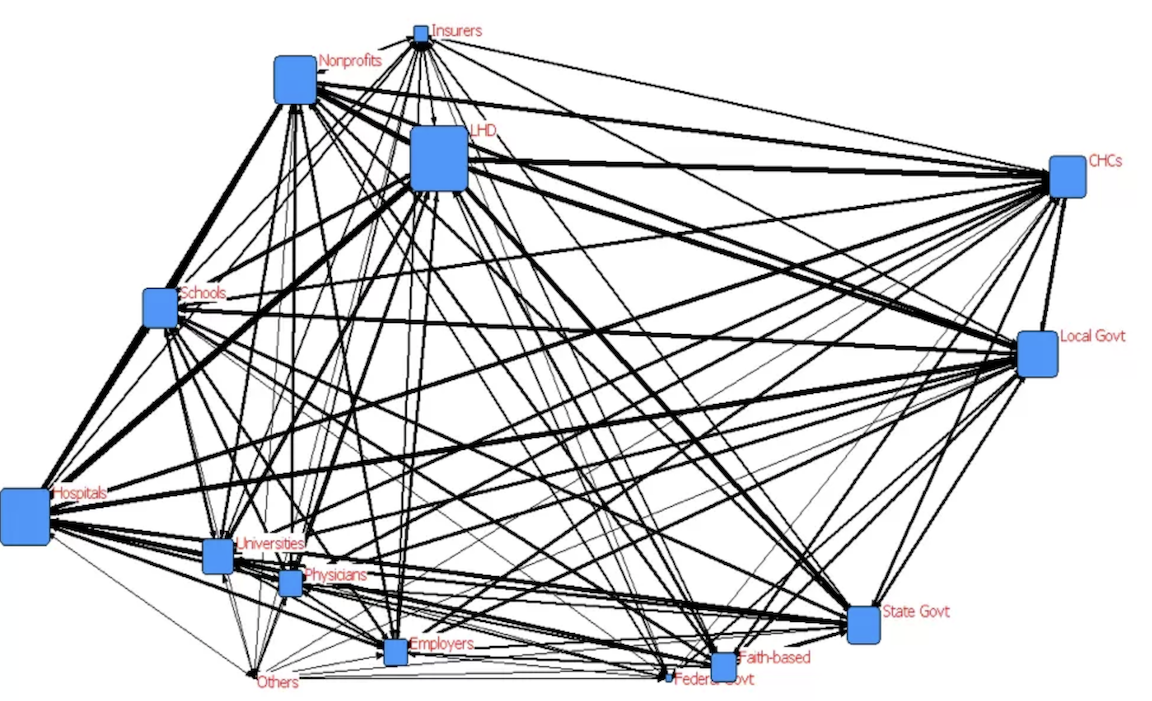NALSYS Research
The National Longitudinal Survey of Public Health Systems (NALSYS) is one of the Robert Wood Johnson Foundation’s national metrics used to track progress in building a Culture of Health across the U.S. Since 1998, NALSYS has followed a nationally representative cohort of U.S. communities in order to study the implementation and impact of multi-sector population health activities. The survey captures information from local public health departments about the types of health improvement activities that are implemented in U.S. communities, and the array of organizations that contribute to these activities. By collecting this information consistently in more than 500 U.S. communities over a span of 25+ years, NALSYS has become the nation’s only national, longitudinal source of information about the actions that local communities undertake to protect and improve the health status of their residents.
By linking longitudinal NALSYS data with a variety of secondary data sources, we conduct rigorous scientific studies that investigate the implementation of multi-sector public health networks and their impact on important health and economic outcomes. For example, our studies estimate the impact of public health networks on rates of preventable mortality, on deaths from COVID-19, on preventable hospitalizations, and on medical care spending. NALSYS data enable research on a variety of policy-relevant issues, such as rural-urban differences in public health networks, tribal engagement in public health networks, the impact of Medicaid expansion on these networks, the roles that these networks play in improving access to maternal and child health services, hospital contributions to public health networks, and the effects of economic shocks on public health networks.
Currently, NALSYS is a research initiative of the Robert Wood Johnson Foundation's Systems for Action national research program based at the University of Colorado Anschutz Medical Campus and led by Dr. Glen Mays. Click here for links to selected studies that use NALSYS data.

Figure 1: An example of an organizational network map of sectors and social services contributing to population health activities in surveyed U.S. communities.

Rather than focusing on a single type of organization or sector, NALSYS measures the network of organizations that support health activities in local communities, from health insurers to community organizations, tracking how these networks evolve and change over time in size and composition (Figure 1). Using network analysis, NALSYS data reveal which organizations and sectors are most influential in local population health networks, and how strongly connected organizations are to other network members. This data has been used to explore the following key questions:
- Why are some communities more successful than others in implementing population health activities?
- What conditions, policies, and strategies help community organizations work together to improve population health?
- How fragile or sustainable are multi-sector population health activities, and what factors build resilient community networks?
- What impact do population health activities and their supporting community networks have on health outcomes? On economic outcomes? On health equity? How do these effects accumulate or dissipate over time?
NALSYS collects information on a set of 20 activities that federal consensus panels and professional associations have long recommended as essential elements of a comprehensive strategy to improve health status in the population at large (Figure 2). The activities measured by the survey reflect recommendations from the National Academy of Medicine, the U.S. Centers for Disease Control and Prevention (CDC), the Public Health Accreditation Board for state and local public health agencies, and the Aspen Institute and others. The activities focus on capabilities and equity that help communities reach decisions about how best to use their individual and collective resources under the real-world constraints of opportunity, uncertainty, competing incentives, and heterogeneous preferences.

|
Figure 2: Activities measured in the National Longitudinal Survey of Public Health Systems. The NALSYS measures a set of 20 activities that support multi-sector, collaborative approaches to improving population health. Each measure reflects one of the cross-cutting capabilities shown in this figure, which are based on long-standing recommendations of national consensus panels and practice guidelines. |